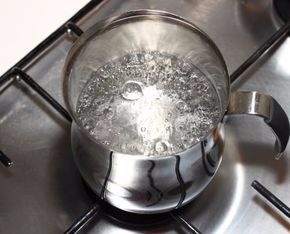Scientists have discovered a way to boil water faster using a combination of nanotechnology and tobacco specific virus, success can help save large amounts of energy in industrial processes, although it will revolutionize the way of making a tea.
The technique works by applying a virus found in the tobacco plant of the boiler heating element (electric resistance, No), informs theguardian.com
The coating on the heating element greatly reduce the number of gas bubbles which are formed around the resistance as it is heated. Agglomerations of air bubbles produced by temporarily isolate the heating elements surrounding water, slowing down heat transfer.
Layer covering the heating elements made of tobacco virus has tripled the efficiency of boiling water, said researchers success that could help to save huge amounts of energy for power plants and industrial cooling systems to electronic systems industrial level.
"Even the smallest improvements in technologies that are widely used can have a huge impact," said Matthew McCarthy, an engineer at Drexel University in Pennsylvania.
Controlling bubble formation process may be helpful in preventing an undesirable phenomenon called "critical flow heat transfer", which can sometimes have disastrous consequences for industrial boilers. This phenomenon occurs when many bubbles are formed so that they merge and form a "blanket" surrounding the heater, which makes possible heat transfer between the heating element and the liquid in the tank.
"What happens is that the dry surface becomes increasingly hot, put on the stove like a ship without water in it. Failure (on heat transfer, no) can result in either simple or destruction of electronic components, where atomoelecrice power cooling systems, catastrophic melting nuclear reactor ", explained Matthew McCarthy.
To counteract this, scientists have tried to create surfaces that repel bubbles and keep it on the wet through which the heat transfer. The team led by McCarthy identified tobacco mosaic virus, which has a shape similar to that of a pencil, as the perfect structure to send the moisture down to a surface.
Researchers have developed a modified strain of the virus, which presents a series of "molecular hooks", which makes adhering to almost any surface. Scientists have grown tobacco plants in laboratory and infected with the virus have changed. "When plants are very sick, put them in a blender and get some kind of green soup," said American engineer.
After a bit of spin and chemical separation, which lasts two days, researchers have obtained a clear solution containing a high concentration of viruses. When cast on a surface, the concentration of viruses are self-assemble into a layer of nano-shells, each of which is pointing upwards, such as a blade of grass.
The surface is then coated with a microscopic layer of nickel, which makes the virus to be inert. "Grass metal" resulting liquid draws the entire surface, allowing water and the heating element is in permanent contact.
During testing, the heat transfer rate tripled coating, depending on the surface that was applied.
More specifically, if two vessels containing water, one having a coating of the viruses, the other without, were heated to the same temperature, the vessel would produce improved twice as much steam.
For a system designed for cooling a silicon electronic parts, covering nearly tripled temperature at which silicon could arrive before the phenomenon of "critical flow heat transfer."
"In the future, this technology could be used in nuclear power plants for the production of sophisticated computers and liquid cooling of electronic devices using high voltages, such as radar systems," said Matthew McCarthy.



